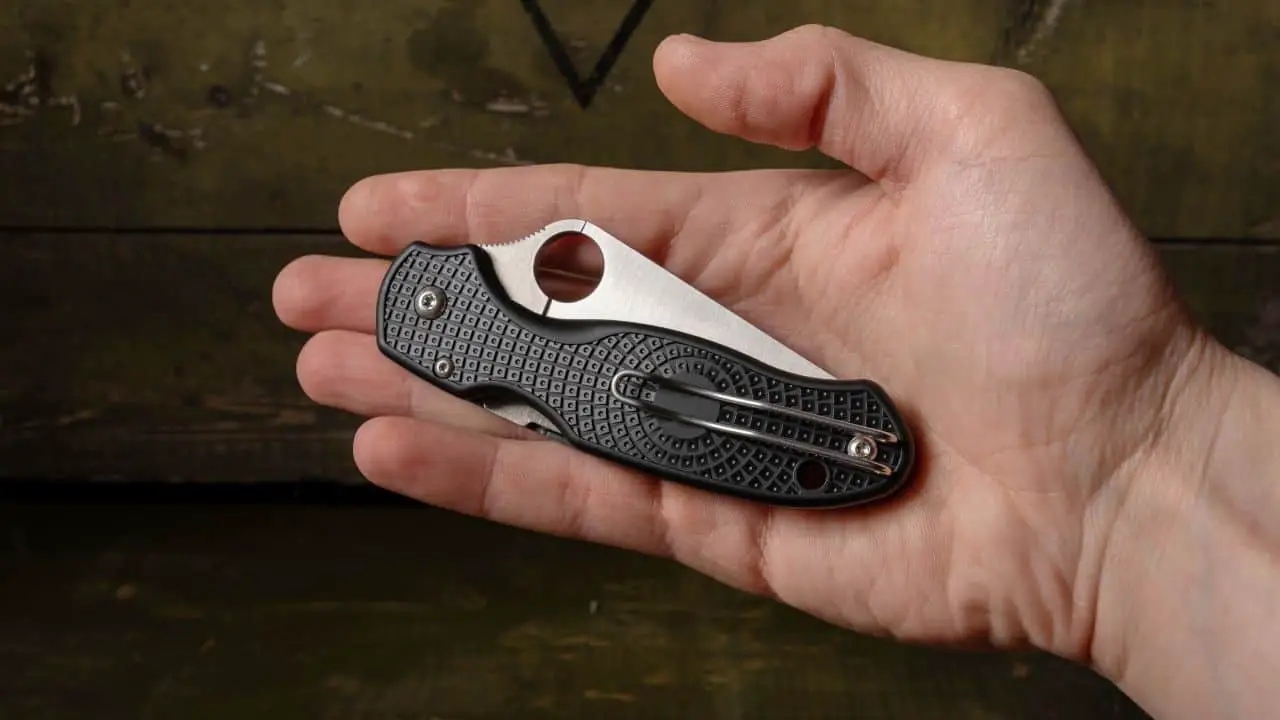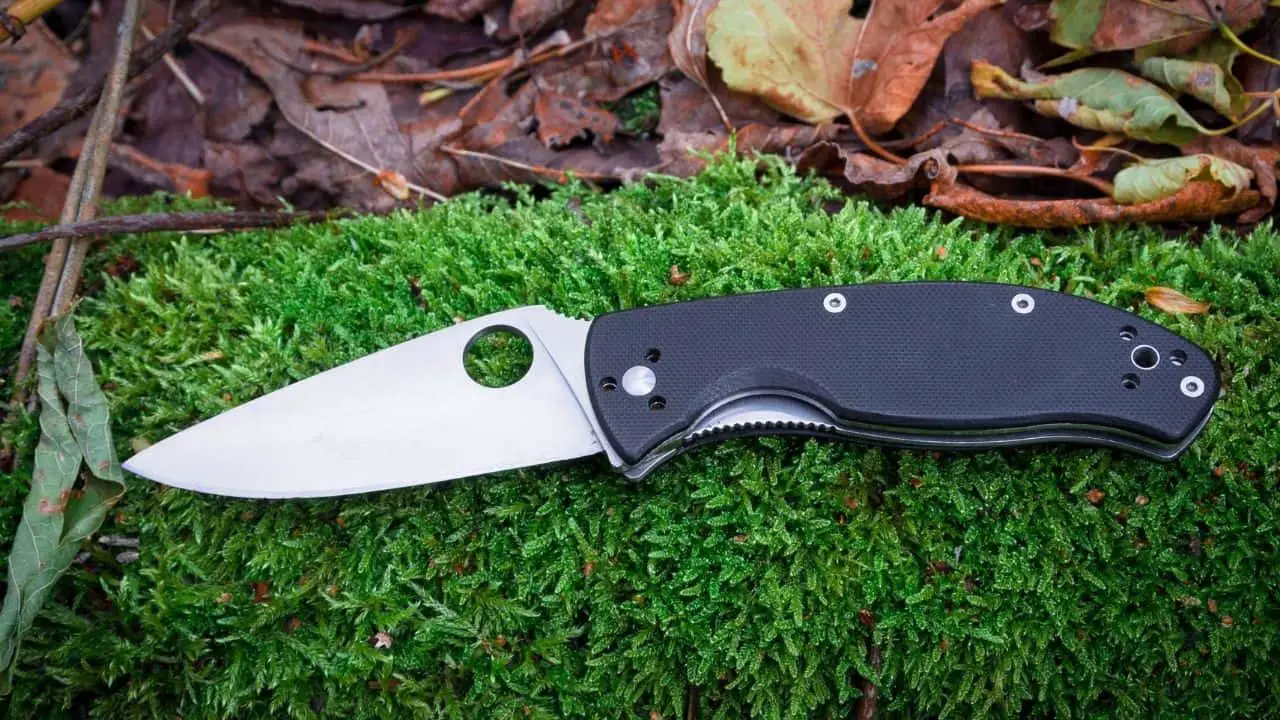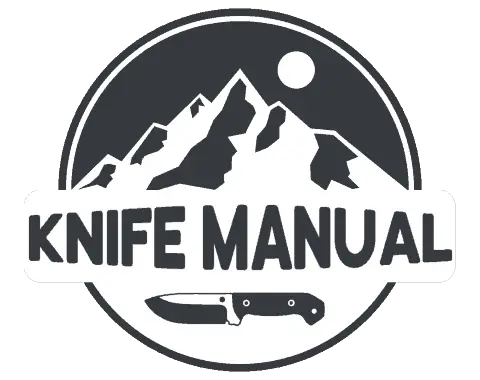Getting a brand new knife is an exciting time, but it can be rather disappointing if you receive a counterfeit or fake knife. Spyderco knives are widely popular, making them the targets of many forgers and people who create counterfeit knives. Below are some of the best ways to go about spotting and identifying a fake Spyderco knife.
Fake Spyderco knives can be tough to spot, especially if you’ve never held a genuine one before. Signs of poor craftsmanship and low-quality materials are often indicators of a fake knife. It is also important to compare your knife’s design, coloring, and packaging to official photos of the product.
When deciding whether a Spyderco knife is counterfeit or genuine, there are a lot of factors and things that you must look at to make an accurate judgment. Let’s take a look at a few of the best tips and tactics for spotting a fake or counterfeit Spyderco knife.
Some of the tips listed below can help you assess whether a Spyderco knife is a fake before purchasing, while others are more useful if you already own the knife and are trying to find out if it’s genuine or not. Let’s get right into it!
Table of Contents
Best Tips for Spotting a Fake or Counterfeit Spyderco Knife

Over time, forgers have become extremely good at crafting real-looking knives that can fool even experience knife owners. To indeed find out if your Spyderco knife is genuine or not, it will often take a lot of time, research, and attention to detail.
My best advice for identifying a fake knife is to take it slowly, do your due diligence regarding research, and get a second pair of eyes on the blade if possible. Sometimes, we don’t see even the most obvious signs of a forgery or of a genuine product because we’ve been stressing and researching so much.
Below are some of the best tips and tricks for identifying whether your Spyderco knife is a genuine blade made by Spyderco or a brilliant knockoff.
1. Check if Spyderco Authorizes the Dealer or Distributor
One of the first things you should do before purchasing a Spyderco knife, or any knife for that matter, is to check if the manufacturer authorizes the seller. You can find Spyderco’s updated list of authorized dealers and distributors here .
.
Spyderco approves authorized dealers, so they’re less likely to sell you a forgery or counterfeit knife. I’m not saying that it’s impossible to pick up a fake Spyderco knife from an authorized dealer, but the chances of it happening are SIGNIFICANTLY lower than if you bought your knife from a random shop or person.
However, many people like to purchase their knives online or second-hand, and often you’ll be purchasing from an individual. Most individual sellers won’t be officially authorized by Spyderco to sell their blades, which means you may need to do a bit of detective work. We’ll discuss this more in the next section.
2. Purchase From a Reputable Seller that Has a History of Good Sales
Whether you are buying your Spyderco knife from an individual or an authorized dealer, make sure to check the seller’s reputation. If someone else has received a counterfeit knife from a seller, they’re likely to write a review or post about it somewhere.
This step is where you may need to do a bit of light detective work.
Before purchasing a Spyderco knife, check seller reviews, comments on social profiles, and anywhere else you can find direct feedback from customers who bought items from the seller. Individuals can be a little more challenging to track and assess because their online presence is often intertwined with their personal lives, but try your best to look at their reputation.
If a dealer or individual has any complaints about fake or counterfeit knives, it’s a pretty good indicator to steer clear of them. Personally, I would only purchase knives from someone who has an extremely clean and good record of sales.
3. Ensure The Price You Pay is Similar to What Other Sellers Offer
Despite what you may hope, it is insanely rare for someone to give away or cheaply sell a Spyderco knife that is in reasonable condition.
Many people trying to make a quick buck by selling counterfeit Spyderco knives will often try to sell you on the story behind the knife and draw attention away from the product itself. They’ll also usually price their fake knives below market value to entice unsuspecting people trying to get a good deal.
Just remember: if the price is too good to be true, it likely is.
A knife’s price isn’t always an accurate indicator of a fake. More sophisticated forgers will price their knives according to market value to avoid suspicion. There are also a handful of genuinely good people who just want to rehome their Spyderco knives for a bargain price.
4. Make Sure the Spyderco Logo on Your Knife is Accurate
The Spyderco logo (which is a stylized and rounded-off silhouette of a spider-looking bug) is very unique, and often counterfeiters don’t quite get it right on their forgeries.
Nearly all modern Spyderco knives and products contain the Spyderco “bug” logo on them either on the blade or engraved into the handle material. If you suspect that your Spyderco knife is fake, it’s likely worth your time to take a look at the logo on your knife and make sure it matches up exactly with the official Spyderco logo.
Counterfeit Spyderco knives often get a few critical elements of the logo wrong:
- The triangle near the head of the “bug”: In the official Spyderco logo, the triangle near the “bug”’s head protrudes slightly from the rest of the silhouette. Many counterfeit knives make the mistake of having the triangle contained within the body and not protrude in the slightest.
- The number or shape of the legs: There are eight legs present on the official Spyderco logo, arranged with four on either side of the body. Make sure your knife has the same number and shape of legs; even small differences can be a sign of a fake knife.
- The shape of the overall design: If you draw an imaginary line connecting the ends of all the legs on the “bug,” the real Spyderco logo makes an oval shape. Some fake knives make the “bug” more circular than it should be, as shown in the original.
5. Compare Your Knife Against Official Photos of the Product
One of the best ways to see if your knife resembles an authentic knife of the same model is to compare it to the real deal. There are many ways to get your hands on official photos of your particular Spyderco knife. Check the official Spyderco website or your specific dealer’s website for product photos.
or your specific dealer’s website for product photos.

Just a word of warning, the best place for photos is straight from the horse’s mouth: the official Spyderco website. Online retailers can show pictures of their forgeries to make it seem like yours matches an authentic Spyderco knife.
When comparing your Spyderco knife to a picture, make sure it is the exact same model. Look for even the smallest differences because forgers often make mistakes when it comes to very specific details.
6. Check for Differences Between Your Knife’s Packaging and Official Product Packaging
While you’re likely to focus most of your attention on the actual knife when you’re trying to figure out if it’s a fake or not, the packaging that your supposed Spyderco knife comes in can reveal a lot.
Packaging can change year over year and from knife model to model, so make sure you compare relevant photos and videos to your knife’s packaging.
One of the best places to pay special attention to on the packaging of Spyderco knives is the placement of the Spyderco logo on the box. Counterfeit Spyderco boxes often have the logo moved just slightly to the left.
7. Look for Defects and Signs of Poor Workmanship on Your Knife
Some counterfeit knives are exceptionally well made (like sometimes rivaling the quality of an authentic Spyderco knife!), but more often than not, forgers try to cut corners where they can. You can often spot a fake Spyderco knife by its poor workmanship and quality.
Spyderco knives are known to be quite well built and with an emphasis placed on precision. While not all genuine Spyderco knives are perfect, they’re often pretty close to it.
Look for screws that don’t quite line up or sit flush to the handle, as well as jagged edges on the blade and handle. Elements on a Spyderco knife that don’t quite fit together, are rough on the edges, or just aren’t right for some reason are pretty good indicators of a fake knife.
8. Inspect Your Knife for Signs of Low-Quality Materials
I previously mentioed that counterfieters like to cut corners by doing sub-par workmanship on their knives sometimes, well, another area where they like to cut costs is materials.
In the product description of your particular Spyderco knife, it’s pretty easy to find out what materials are used to craft the authentic version of your knife. Compare your knife’s materials to those listed in the description to see if they match.
Somewhere on your knife blade, it should indicate what steel it is. Most knife handles also have this sort of information to show what material it is.
Well, that’s all of the tactics and tips I’ve got for spotting a fake or counterfeit Spyderco knife! Make sure to check my other article where I discuss how to spot a fake Benchmade knife by clicking here .
.
Below are a few of the most popular and practical Spyderco knives out there, so make sure to check them out if you’re interested:

